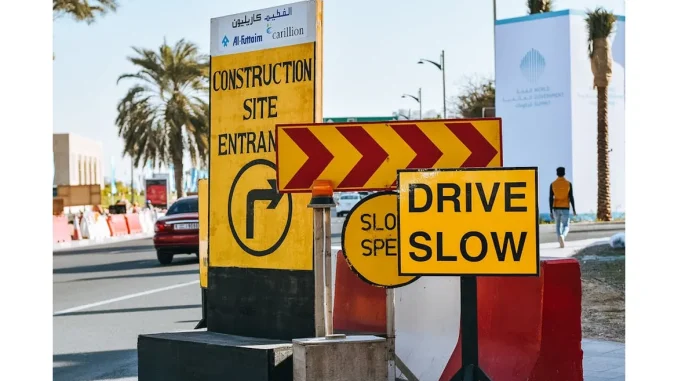
Construction sites are dynamic environments fraught with risks and hazards that can lead to accidents and injuries. Each year, a significant number of construction workers face the grim reality of being killed or severely injured on the job, underscoring the critical importance of prioritising safety in the construction industry. By adopting and implementing a suite of comprehensive safety measures, training programmes, and stringent safety protocols, construction companies can create a secure working environment that protects workers from potential dangers.
A foundational step in ensuring construction site safety is the provision of extensive training on safety protocols. This training should encompass the proper use of personal protective equipment (PPE), the correct handling of equipment and tools, and a thorough understanding of safety procedures. Equipping workers with this knowledge helps them identify and mitigate potential hazards, significantly enhancing safety outcomes. Regular and detailed training sessions ensure that safety practices become ingrained in the workers’ routines, fostering a safer work site. Beyond basic training, cultivating a culture of safety awareness is paramount. Encouraging open communication about safety concerns and involving workers in safety planning and decision-making can lead to a proactive safety culture. Implementing a buddy system, where workers look out for each other and ensure adherence to safety protocols, further enhances this culture. When safety becomes a shared responsibility, the likelihood of accidents diminishes.
Falls remain one of the major risks on construction sites, making proper scaffolding and fall protection systems essential. Safety briefings before work shifts and regular safety meetings help reinforce these practices and address any emerging safety concerns, particularly those related to working at heights. Ensuring that scaffolding is securely erected and maintained, and that fall protection equipment is used correctly, can prevent many potential accidents. Preparedness for emergencies is another critical aspect of construction site safety. Emergency response plans must be in place to ensure swift and effective responses to accidents or injuries. Access to first aid kits and medical assistance is vital for immediate response, highlighting the importance of emergency preparedness. Regular drills and simulations can prepare workers for various emergency scenarios, ensuring they know how to respond swiftly and effectively.
Health monitoring of construction workers is equally important. Regular health checks can detect early signs of issues like hearing loss, musculoskeletal disorders, and lung disease. Proper ventilation in construction areas reduces exposure to hazardous substances, while correct storage and handling of hazardous materials prevent accidents and exposure. These measures safeguard workers’ long-term health, ensuring they remain fit for their demanding roles. Clear and effective communication of safety protocols is also essential. Proper signage on construction sites reminds workers of safety practices and keeps unauthorised personnel away from hazardous areas. Ensuring that all workers are aware of and understand the safety procedures allows them to navigate the construction site safely.
Prioritising safety compliance over speed or cost is a crucial mindset for construction companies. Recognising that worker health and well-being are paramount in a high-risk environment ensures a safer workplace. A clear chain of command for addressing safety issues ensures that concerns are resolved promptly, promoting a culture of safety compliance. Designated safety officers or supervisors on construction sites play a vital role in overseeing safety compliance. These officers should conduct regular safety drills and simulations to prepare workers for emergency situations. Promoting a safety-first mentality among workers leads to a safer work environment and reduces the likelihood of accidents.
Continuous improvement in safety practices is essential. Maintaining detailed safety records and incident reports helps track and analyse safety performance, identify areas needing improvement, and prevent future accidents. This ongoing evaluation and enhancement of safety measures ensure that construction sites remain safe for all workers. Compliance with health and safety regulations is fundamental in preventing accidents and injuries. Ensuring adherence to established safety standards and regulations is key to creating a safe working environment. This compliance not only protects workers but also enhances the overall safety culture within the industry.
Ultimately, construction safety is a critical aspect of ensuring the well-being of workers and preventing accidents and injuries on construction sites. By implementing essential safety measures, comprehensive training programmes, and stringent safety protocols, construction companies can create safer work environments and protect their most valuable asset—their workers. Prioritising safety, fostering a culture of safety awareness, and maintaining vigilant oversight of safety practices are crucial steps in enhancing construction site safety and reducing the risks associated with working in the construction industry. Through these efforts, the construction industry can significantly mitigate the dangers inherent in construction work and ensure a healthier, safer future for all its workers.


Be the first to comment